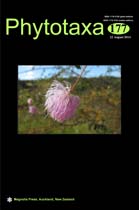Abstract
Even though it is well known that the flora of Amazonia is severely under-documented, botanical research in the region has been stagnant for the past two decades or more. An exception to this trend has been the international collaboration in the state of Acre, Brazil. The objective of this study was to assess botanical progress in Southwestern Amazonia, specifically the evolution of our knowledge of the flora of the state of Acre five years after production of the first catalogue of its flora. Between 2006-2011, the Acre data-base recorded 2,110 determinations, and among these were 347 new records for Acre, representing an increase of 8.6% in the known flora, which as of 2011 comprised 4351 species. Of the new records, 6.6% (23) were new records for Brazil and 14.4% (50) represented genera new to Acre. The new records comprised 322 species of vascular plants and 22 of non-vascular plants. The most significant finding was that one of every six identifications was a new record for Acre; the total flora of Acre is estimated to be at about 8,000 species. Advances in documentation of the Acre flora have been achieved through institutional partnerships, attention to rescuing and “cleaning” data, mobilizing taxonomic specialists, distributing duplicates to herbaria with significant Amazon collections, and undertaking expeditions to regions of the state that were poorly known or unknown. Indeed, the botanical inventory of Amazonia overall and the management and conservation of the Amazon flora can be realized only through programs that are systematic, integrative and participatory. Every effort must be made to guarantee that the inventory of Amazonia proceeds at least as rapidly as deforestation and development. This necessarily means far greater investment in training, employing, and supporting the field work of productive taxonomists.

